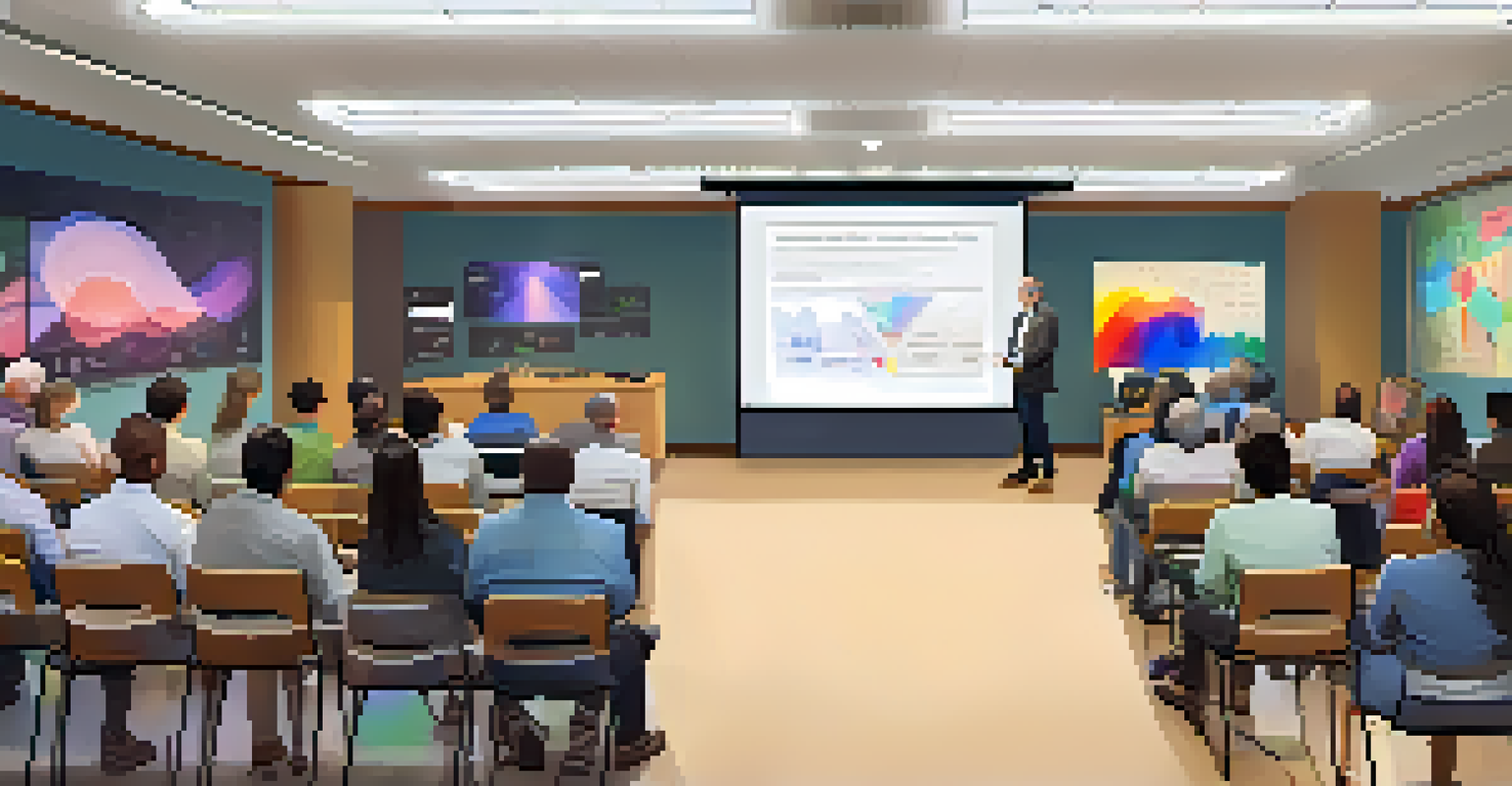Advocacy for Chronic Pain Awareness and Education

Understanding Chronic Pain: A Hidden Struggle
Chronic pain affects millions, yet it often goes unnoticed. People living with conditions like fibromyalgia or arthritis endure discomfort day in and day out, often without visible signs. This invisible nature can lead to misunderstandings and a lack of empathy from others.
Chronic pain is like a fog that never lifts; it’s a constant presence, sometimes heavy and oppressive, other times just an irritating haze in the background.
Imagine waking up every day with a cloud of pain overshadowing your every move. For those with chronic pain, even simple tasks can feel monumental. This ongoing struggle can take a toll not just physically, but emotionally and mentally as well.
Raising awareness about chronic pain is crucial for fostering understanding. By shedding light on these invisible burdens, we can promote compassion and support for those affected, encouraging open conversations about their experiences.
The Role of Education in Chronic Pain Advocacy
Education is a powerful tool in advocacy. By informing the public about chronic pain, we can dispel myths and misconceptions that often surround it. This knowledge can empower both patients and caregivers, fostering a more supportive environment.

Consider how many people still believe chronic pain is just 'in your head.' Educating the community can help shift this mindset, allowing for better treatment options and emotional support. When people understand the complexities of chronic pain, they are more likely to advocate for better resources and care.
Chronic Pain is Often Invisible
Many individuals suffering from chronic pain conditions face daily struggles that are not visible to others, leading to misunderstandings and a lack of empathy.
Workshops, seminars, and online resources are just some ways to promote education. By making information accessible, we can bridge the gap between those who suffer and those who want to help.
Sharing Personal Stories: A Powerful Advocacy Tool
Personal stories have a unique ability to resonate with others. When individuals share their experiences with chronic pain, it humanizes the issue and fosters empathy. These narratives can break down barriers and encourage dialogue.
The greatest weapon against stress is our ability to choose one thought over another.
Take, for example, a blog post from someone living with chronic migraines. Their vivid descriptions bring to life the impact of these headaches on daily activities, prompting readers to understand the seriousness of the condition. Such stories can inspire action and advocacy on both personal and community levels.
Encouraging individuals to share their journeys can amplify voices that are often marginalized. Social media platforms are ideal for these stories, providing a space for connection and support among those facing similar challenges.
Creating Support Networks for Those in Pain
Support networks play a vital role in the lives of those with chronic pain. These communities provide a space for individuals to connect, share experiences, and offer advice. Having a support system can make a significant difference in managing the emotional toll of chronic pain.
Imagine attending a local support group where everyone understands your struggle. This camaraderie can reduce feelings of isolation and empower individuals to seek help. Knowing that others are fighting similar battles can instill hope and resilience.
Education Empowers Advocacy
Informing the public about chronic pain can dispel myths and foster a supportive environment for patients and caregivers alike.
Online forums and social media groups also serve as valuable resources. They offer a platform for individuals to seek advice, share coping strategies, and build friendships across geographical boundaries.
The Impact of Policy on Chronic Pain Management
Policy decisions can greatly affect the quality of care for those living with chronic pain. Advocacy efforts aimed at influencing healthcare policies are essential for ensuring access to treatment and resources. This includes pushing for pain management options that are both effective and respectful of patient needs.
Consider how recent legislation regarding opioid prescriptions has impacted pain management. While intended to combat addiction, it has also made it more challenging for some chronic pain patients to find relief. Advocating for balanced policies that consider the needs of all patients is paramount.
Engaging with lawmakers and participating in advocacy campaigns can lead to meaningful change. By voicing concerns and sharing experiences, individuals can influence the development of policies that better serve the chronic pain community.
Raising Awareness Through Events and Campaigns
Events and campaigns are effective ways to raise awareness about chronic pain. Awareness months, local walks, and educational events can attract attention and encourage participation. These gatherings create opportunities for community engagement and education.
For instance, organizing a community walk for chronic pain awareness not only raises funds but also promotes understanding. Participants can learn about different conditions while fostering a sense of solidarity among those affected.
Personal Stories Foster Connection
Sharing personal experiences with chronic pain can humanize the issue, breaking down barriers and encouraging empathy and dialogue.
Social media campaigns can also amplify awareness efforts. By using hashtags and sharing infographics, advocates can reach a broader audience and spark conversations about chronic pain on a global scale.
The Future of Chronic Pain Advocacy: Hope and Progress
The future of chronic pain advocacy holds promise as awareness continues to grow. With ongoing education and community support, we can create a more inclusive environment for individuals living with chronic pain. This progress is crucial for improving their quality of life.
Innovations in treatment options and increased research funding are also on the horizon. As advocacy efforts gain momentum, we can hope for better solutions that address the needs of chronic pain patients.

Ultimately, the journey toward increased awareness and education is a collective effort. By standing together, sharing stories, and advocating for change, we can build a future where chronic pain is understood, treated, and supported.